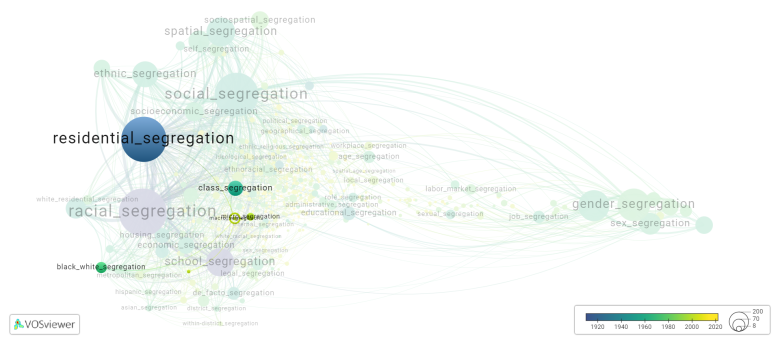Macro segregation
Date and country of first publication[1]
2009
United States
Definition
Macro segregation in the urban and social context refers to the broad-scale spatial separation of different social groups within a city or metropolitan area. Unlike micro-segregation, which focuses on segregation at a smaller scale (such as within neighborhoods or city blocks), macro segregation considers patterns of segregation at a larger, city-wide or regional level.
Macro segregation can manifest along various lines, including race, ethnicity, socio-economic status, and other demographic characteristics. It often results from historical processes, discriminatory policies, economic disparities, and cultural factors that influence where different groups choose to live and work within a city.
This type of segregation can have profound effects on urban development, social cohesion, and access to opportunities. It may contribute to the concentration of poverty or affluence in certain areas, uneven access to quality education, healthcare, and other services, and disparities in employment opportunities and economic mobility.
Efforts to address macro segregation typically involve comprehensive urban planning strategies, housing policies, transportation initiatives, and community development programs aimed at promoting inclusive and equitable growth. These efforts often seek to create diverse and mixed-income neighborhoods, improve access to affordable housing and public transportation, and foster social integration and cohesion across different demographic groups within the urban landscape.
Synonyms
The following terms are synonymous with macro segregation:
macro level segregation; macro scale segregation.
References and literature addressing this segregation form under these synonymous terms can be found below.
See also
Related segregation forms
Macro segregation is frequently discussed in the literature with the following segregation forms:
residential segregation, racial segregation, spatial segregation, racial residential segregation, class segregation, ethnoracial segregation

This visualization is based on the study The Multidisciplinary Landscape of Segregation Research.
For the complete network of interrelated segregation forms, please refer to:
References
Notes
- ↑ Date and country of first publication as informed by the Scopus database (December 2023).
At its current state, this definition has been generated by a Large Language Model (LLM) so far without review by an independent researcher or a member of the curating team of segregation experts that keep the Segregation Wiki online. While we strive for accuracy, we cannot guarantee its reliability, completeness and timeliness. Please use this content with caution and verify information as needed. Also, feel free to improve on the definition as you see fit, including the use of references and other informational resources. We value your input in enhancing the quality and accuracy of the definitions of segregation forms collectively offered in the Segregation Wiki ©.
Macro segregation appears in the following literature
Massey D.S., Rothwell J., Domina T. (2009). The changing bases of segregation in the United States. Annals of the American Academy of Political and Social Science, 626(1), 74-90. https://doi.org/10.1177/0002716209343558
Reardon S.F., Farrell C.R., Matthews S.A., O'Sullivan D., Bischoff K., Firebaugh G. (2009). Race and space in the 1990s: Changes in the geographic scale of racial residential segregation, 1990 2000. Social Science Research, 38(1), 55-70. https://doi.org/10.1016/j.ssresearch.2008.10.002
Fossett M. (2017). Unifying Micro level and Macro level Analyses of Segregation. Springer Series on Demographic Methods and Population Analysis, 42(), 139-179. Springer Science and Business Media B.V..https://doi.org/10.1007/978-3-319-41304-4_9
